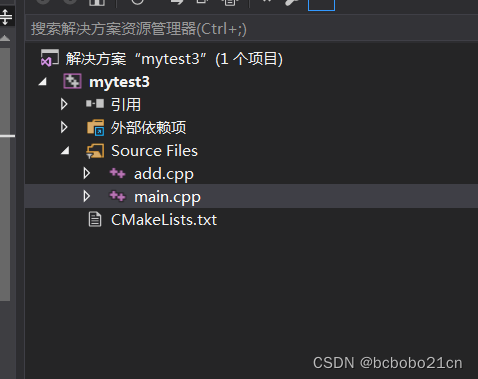项目部署之OpenResty
1. OpenResty介绍
OpenResty® 是一个基于Nginx的高性能Web平台,用于方便地搭建能够处理超高并发、扩展性极高的动态Web应用、Web服务和动态网关。具备下列特点:
- 具备
Nginx的完整功能 - 基于
Lua语言进行扩展,集成了大量精良的Lua库、第三方模块 - 允许使用
Lua自定义业务逻辑、自定义库
官方网站:https://openresty.org/cn/

2. 安装
2.1 安装开发库
首先要安装OpenResty的依赖开发库,执行命令:
yum install -y pcre-devel openssl-devel gcc --skip-broken
2.2 安装OpenResty仓库
你可以在你的CentOS系统中添加 openresty 仓库,这样就可以便于未来安装或更新我们的软件包(通过 yum check-update 命令)。运行下面的命令就可以添加我们的仓库:
yum-config-manager --add-repo https://openresty.org/package/centos/openresty.repo
如果提示说命令不存在,则运行:
yum install -y yum-utils
然后再重复上面的命令
2.3)安装OpenResty
然后就可以像下面这样安装软件包,比如 openresty:
yum install -y openresty
2.4 安装opm工具
opm是OpenResty的一个管理工具,可以帮助我们安装一个第三方的Lua模块。
如果你想安装命令行工具 opm,那么可以像下面这样安装 openresty-opm 包:
yum install -y openresty-opm
2.5 目录结构
默认情况下,OpenResty安装的目录是:/usr/local/openresty

看到里面的nginx目录了吗,OpenResty就是在Nginx基础上集成了一些Lua模块。
2.6 配置nginx的环境变量
打开配置文件:
vi /etc/profile
在最下面加入两行:
export NGINX_HOME=/usr/local/openresty/nginx
export PATH=${NGINX_HOME}/sbin:$PATH
NGINX_HOME:后面是OpenResty安装目录下的nginx的目录
然后让配置生效:
source /etc/profile
2. 启动和运行
OpenResty底层是基于Nginx的,查看OpenResty目录的nginx目录,结构与windows中安装的nginx基本一致:

所以运行方式与nginx基本一致:
# 启动nginx
nginx
# 重新加载配置
nginx -s reload
# 停止
nginx -s stop
nginx的默认配置文件注释太多,影响后续我们的编辑,这里将nginx.conf中的注释部分删除,保留有效部分。
修改/usr/local/openresty/nginx/conf/nginx.conf文件,内容如下:
#user nobody;
worker_processes 1;
error_log logs/error.log;events {worker_connections 1024;
}http {include mime.types;default_type application/octet-stream;sendfile on;keepalive_timeout 65;server {listen 8081;server_name localhost;location / {root html;index index.html index.htm;}error_page 500 502 503 504 /50x.html;location = /50x.html {root html;}}
}
在Linux的控制台输入命令以启动nginx:
nginx
然后访问页面:http://192.168.150.101:8081,注意ip地址替换为你自己的虚拟机IP:
3. 备注
加载OpenResty的lua模块:
#lua 模块
lua_package_path "/usr/local/openresty/lualib/?.lua;;";
#c模块
lua_package_cpath "/usr/local/openresty/lualib/?.so;;";
common.lua
-- 封装函数,发送http请求,并解析响应
local function read_http(path, params)local resp = ngx.location.capture(path,{method = ngx.HTTP_GET,args = params,})if not resp then-- 记录错误信息,返回404ngx.log(ngx.ERR, "http not found, path: ", path , ", args: ", args)ngx.exit(404)endreturn resp.body
end
-- 将方法导出
local _M = { read_http = read_http
}
return _M
释放Redis连接API:
-- 关闭redis连接的工具方法,其实是放入连接池
local function close_redis(red)local pool_max_idle_time = 10000 -- 连接的空闲时间,单位是毫秒local pool_size = 100 --连接池大小local ok, err = red:set_keepalive(pool_max_idle_time, pool_size)if not ok thenngx.log(ngx.ERR, "放入redis连接池失败: ", err)end
end
读取Redis数据的API:
-- 查询redis的方法 ip和port是redis地址,key是查询的key
local function read_redis(ip, port, key)-- 获取一个连接local ok, err = red:connect(ip, port)if not ok thenngx.log(ngx.ERR, "连接redis失败 : ", err)return nilend-- 查询redislocal resp, err = red:get(key)-- 查询失败处理if not resp thenngx.log(ngx.ERR, "查询Redis失败: ", err, ", key = " , key)end--得到的数据为空处理if resp == ngx.null thenresp = nilngx.log(ngx.ERR, "查询Redis数据为空, key = ", key)endclose_redis(red)return resp
end
开启共享词典:
# 共享字典,也就是本地缓存,名称叫做:item_cache,大小150m
lua_shared_dict item_cache 150m;
resp = nilngx.log(ngx.ERR, "查询Redis数据为空, key = ", key)
end
close_redis(red)
return resp
end
开启共享词典:```nginx
# 共享字典,也就是本地缓存,名称叫做:item_cache,大小150m
lua_shared_dict item_cache 150m;



















